“Forest Fire Fighter” is a job that often comes to mind when people try to think of forestry careers, but fighting fires is only one part of a much larger process of wildfire management. Jobs range from Lookout Observers to Wildfire Dispatchers to Helitack Fire Fighters.
Another area within fire management is Wildfire Technology. To learn more about what Wildfire Technologists do, I interviewed Mark Handel.
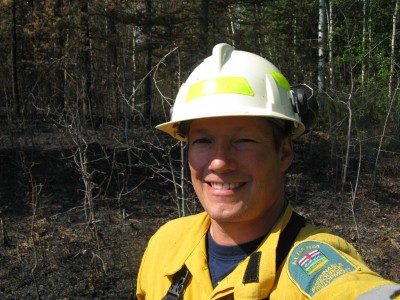
Tell me about your job. Who do you do work for? What is your role in the organization?
My day job is working in the glamorous world of wildland fire. I am a Wildfire Technologist with Alberta Environment & Sustainable Resource Development (AESRD), Forestry and Emergency Response Division (FERD). Generally, my work entails preventing wildfire, preparing for and mitigating the negative impacts of wildfire, and when prevention doesn’t work, fighting the fire I couldn’t prevent. I also assist in other programs within our Division such as forest operations monitoring, fish & wildlife surveys, and wildfire training.
What role do Wildfire Technologists play in the forest industry?
Wildfire Techs work closely with their colleagues, Wildfire Rangers, to implement wildfire and forestry programs for a diverse group of clientele; stakeholders, other agencies, and members of the public. The tech’s role covers a wide array of duties like recruiting, fire-training, delivering fire prevention or operational initiatives (like FireSmart programs), organizing stakeholder agreements, preparing fire personnel and resources for duty, educating about wildfire, and managing fire facilities to name a few. Additionally, many Techs assist with forest management, forest health, workplace safety, communications, and educational programs.
In a more direct sense though, Wildfire Techs contribute to protecting Alberta’s natural resources from wildfire and other natural agents.
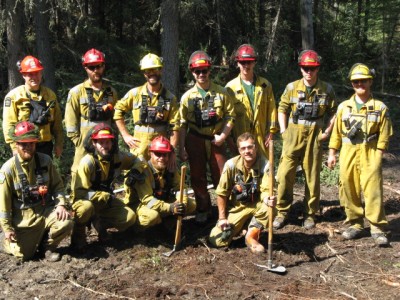
What is your background (experience/training)?
I have a Bachelor of Science degree in Forestry from the University of Alberta. I cut my teeth fighting fire on initial attack crews in the foothills of Alberta during summer months to gain valuable experience and tuition money, the latter of which was often spent in local taverns. The first 8 years of my career were spent in British Columbia climbing wet, rugged, grizzly-infested coastal/interior terrain. I was busy surveying, mapping, flagging, and prescribing harvest and silvicultural treatments for consultants and forest companies. I earned my first professional forester designation there.
I moved back to Alberta to work in the unique role of forest protection/harvest operations for a respected forest company, and did so for many years, earning my RPF (Registered Professional Forester) designation there as well. I eventually made the transition from industry to government to focus on wildfire/natural disturbance challenges.
Sounds like you have done a wide variety of work. What does a typical day/week look like for you?
The cool thing about this job is that it changes by season, of which we have two: “Fire Season” and “Not Fire Season”. Preparing for fire season my typical day might be recruiting and training seasonal staff, helping with facility openings and inspections, gearing up kits, and meeting with patrolmen, fire guardians, and fire crews. I might also be conducting training exercises or developing an early season prescribed burn plan.
During fire season, if not deployed to an active wildfire somewhere, there are the duty officer and response officer roles that I partake in (roles that organize first strike and sustained action fire forces, and also prioritize wildfire, flood, and other incidents within our Area). I also supervise our fire permit program, and may direct staff on permit priorities, or issue permits myself.
During non-fire season, or low hazard times in fire season, efforts are focused on pre-planning of wildfire prevention initiatives such as FireSmart and preparing for busy parts of fire season and the inevitability of wildfire occurrences. It could be a mixed bag of tasks. For example, on Monday, I was conducting harvest operations inspections, Tuesday I was off in a helicopter conducting forest fuel assessments. Wednesday I had mapping work, Thursday more inspections, and Friday I will be preparing to assist Fish and Wildlife colleagues.
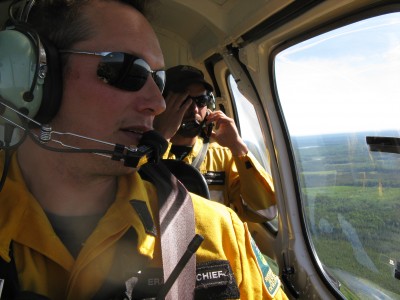
What are your favourite parts of your job?
I would have to say it is the diversity of the job; that and the cool uniform. I do like the fact that this job has a sense of history, similar to other forestry occupations in Alberta. It used to be done with horses, but has evolved to utilize some very sophisticated technology. Wildfire management today incorporates a significant amount of science rigor.
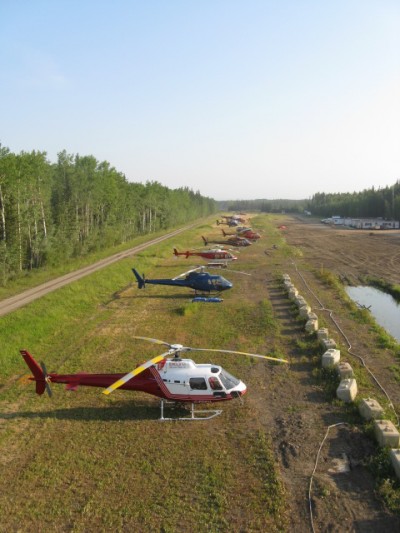
What are some of the challenges you have faced?
Right off the start, one technical challenge for me was learning to work on much larger fires than what I was used to as a Helitack firefighter. My new job required working on larger, more volatile wildfires as a member of an overhead team member (a team that oversees emergency incidents). In my case, I was often involved in suppression operations such as being a Division Supervisor or Operations Section Chief (who looks after all the suppression activity on large wildfires).
Overall, the switch from industry to government had some challenges for me, but nothing insurmountable.
Can you give an example of a time when your work had a significant impact?
I can think of two times I was involved in decision-making on the fireline that resulted in significant outcomes. Both involved large, out-of-control wildfires that grew to become quite large.
I have always been interested in wildfire management on a landscape scale and in situations where the absence of wildfire has resulted in a lack of forest renewal and diversity. I was appointed to a team to fight 2 wildfires growing rapidly, within a landscape pre-identified for special response and tactics. We were given leeway to employ modified suppression tactics, expected to take direction from a new wildfire management strategy, and given access to very experienced fire personnel. This sounds like some Black Op, but it was honestly firefighting. The end result was a disturbance that contributed immensely to landscape management objectives that was cost-effective in execution with minimal losses. It was deemed a wildfire management success.
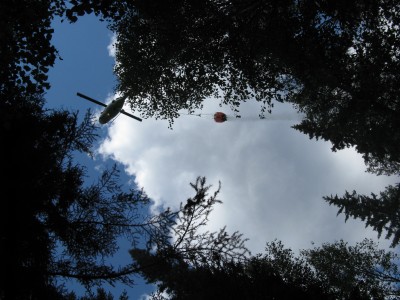
A second, more visceral situation, occurred some years later, where assisting a night operation (we will fight fires at night if safety is not compromised), I decided to pull all resources off an intensifying wildfire. I had also decided to pull a lone fire lookout operator (sleeping at the time) from his cabin located some distance away in case it lay within the fire’s potential path. Sometime during the night the fire swept over the tower site, so the towerman and I were certainly pleased with the actions we took.
What qualities make up an ideal candidate for a position like yours?
Smart, strong, really, really good-looking. Well not exactly. An ideal candidate would come out of a recognized post-secondary forestry or environmental sciences program, have a well-rounded work background (industry, consulting, and government), and a passion for wildland firefighting. We are civil servants, so a willingness to provide excellent service to the public is important.
On the fireline, it also pays to have no issues with authority as we are kind of a para-militaristic organization. You don’t really have to be a Navy SEAL operator, but you do take and provide direction readily. Being a bit of a calm character helps too.
Final comments?
The ESRD-FERD is a large, proud organization and it works within varied jurisdictions and capacities. Under the Wildfire banner, there are numerous technician, ranger, crew leader, specialist, and managerial roles. If you think it might be for you, visit our website to learn about the variety of opportunities.